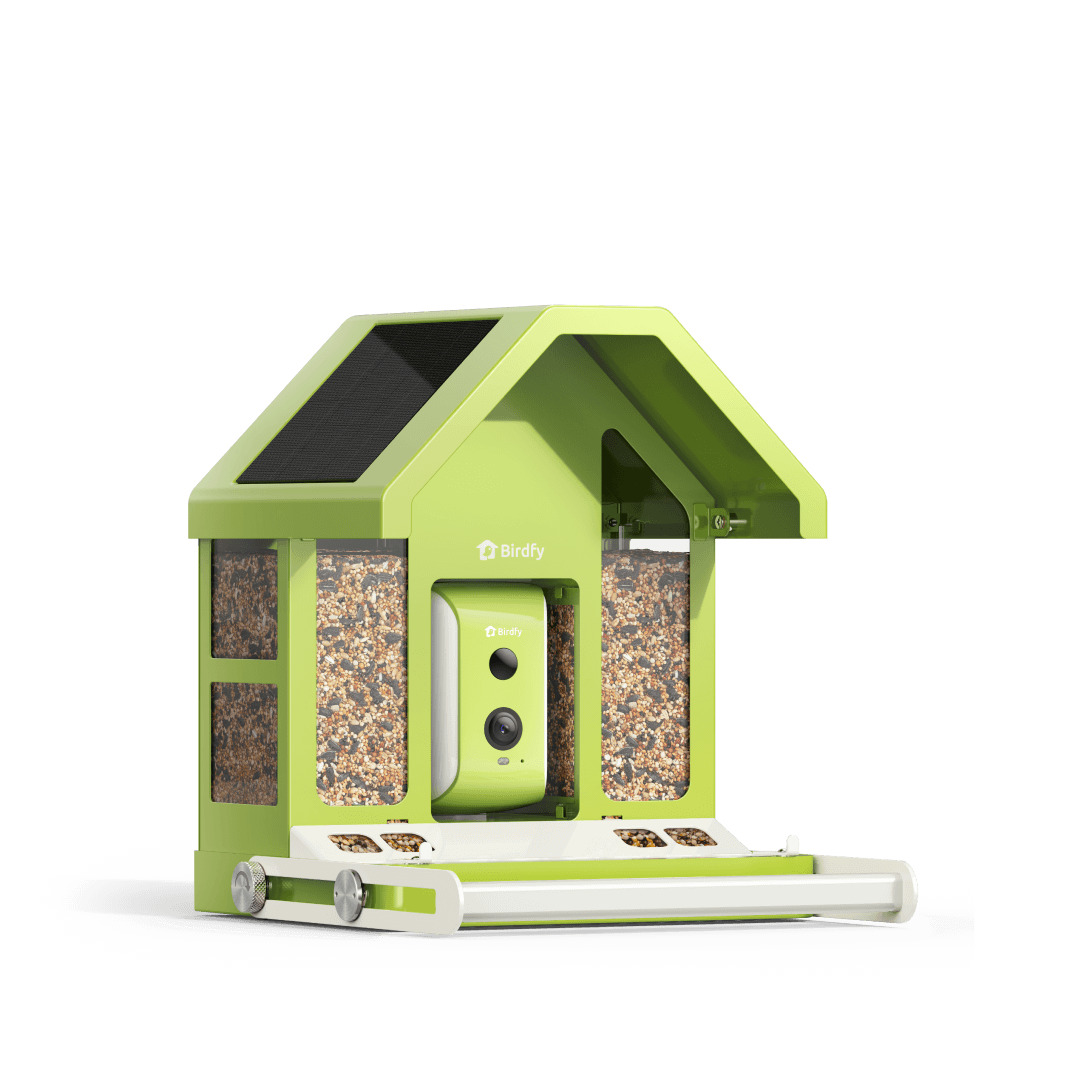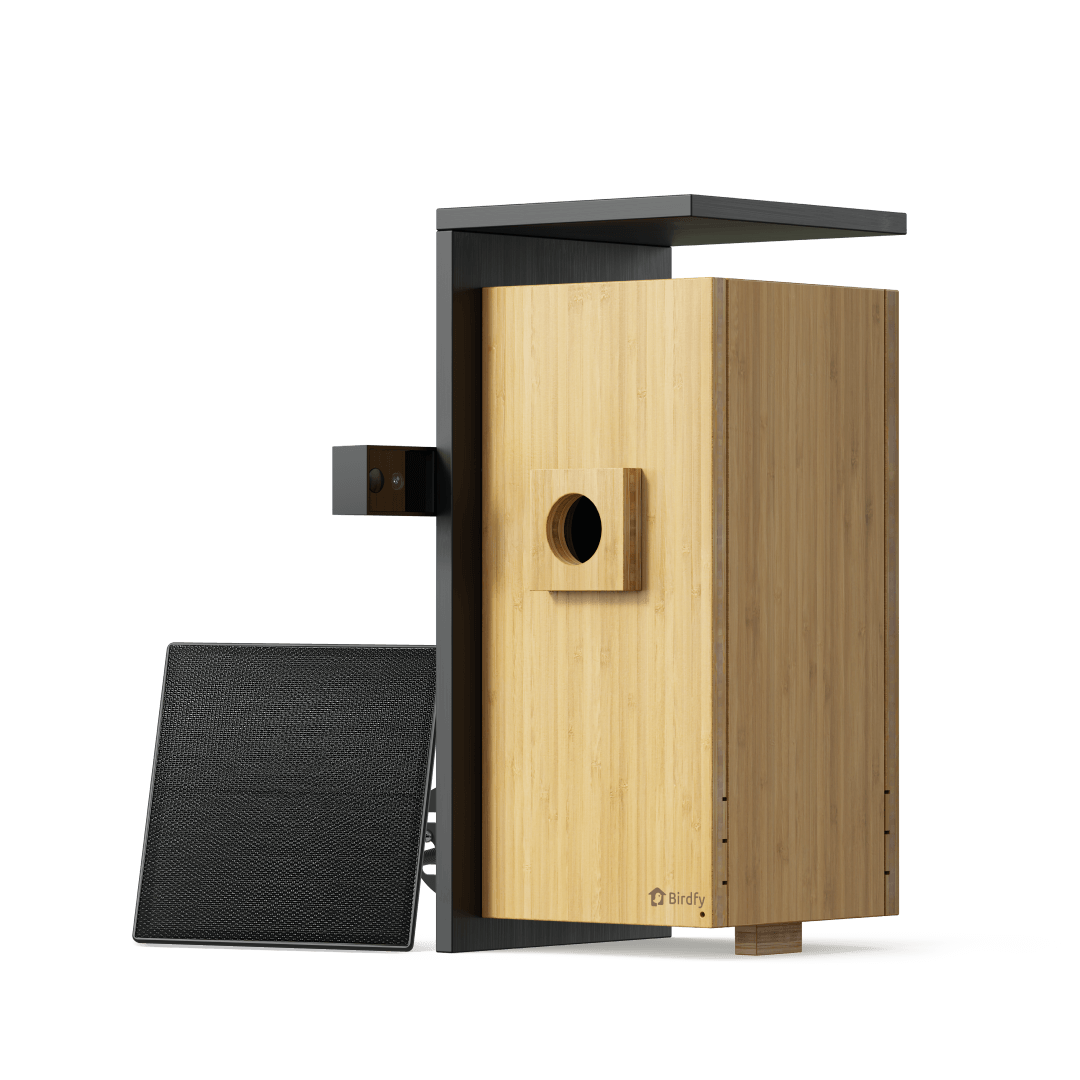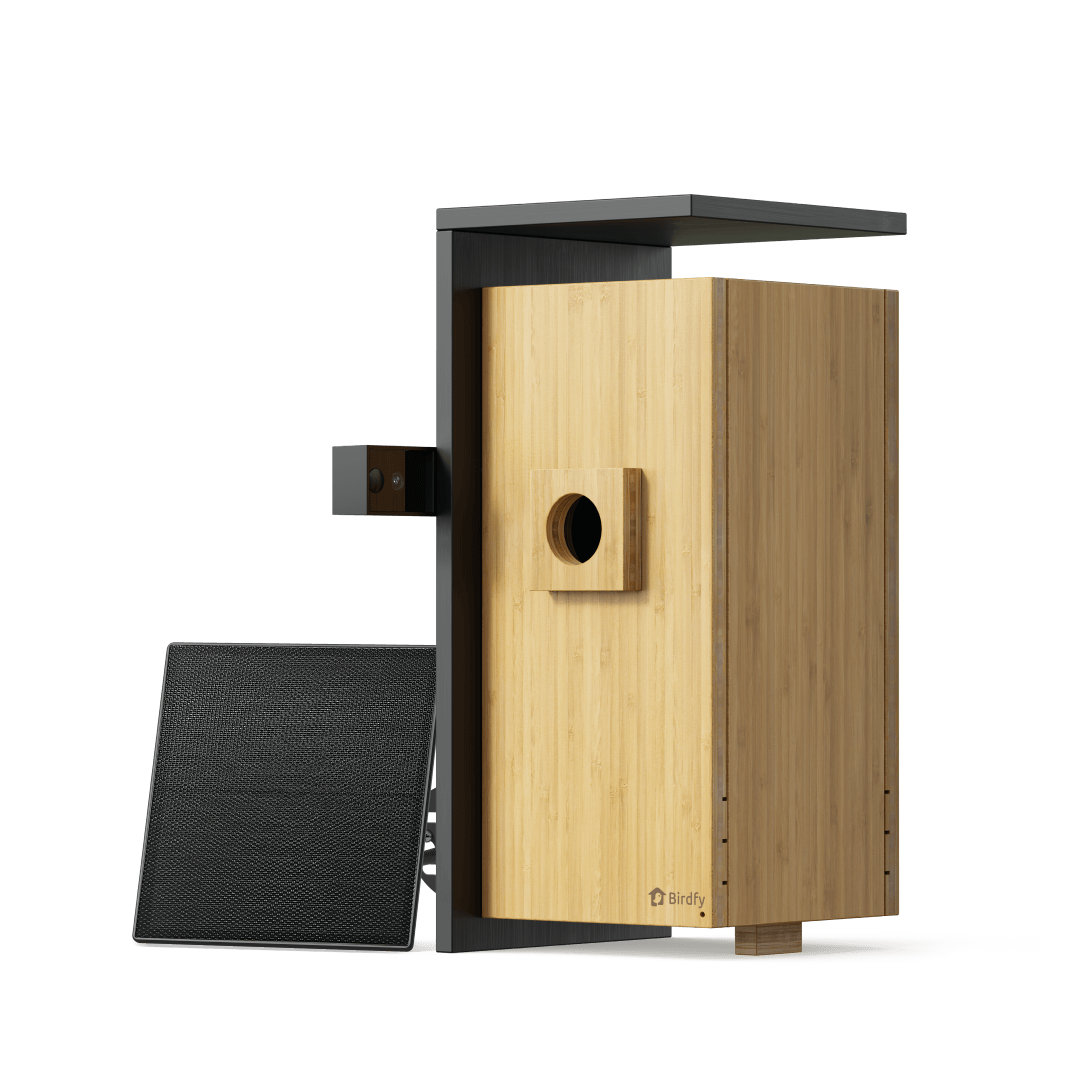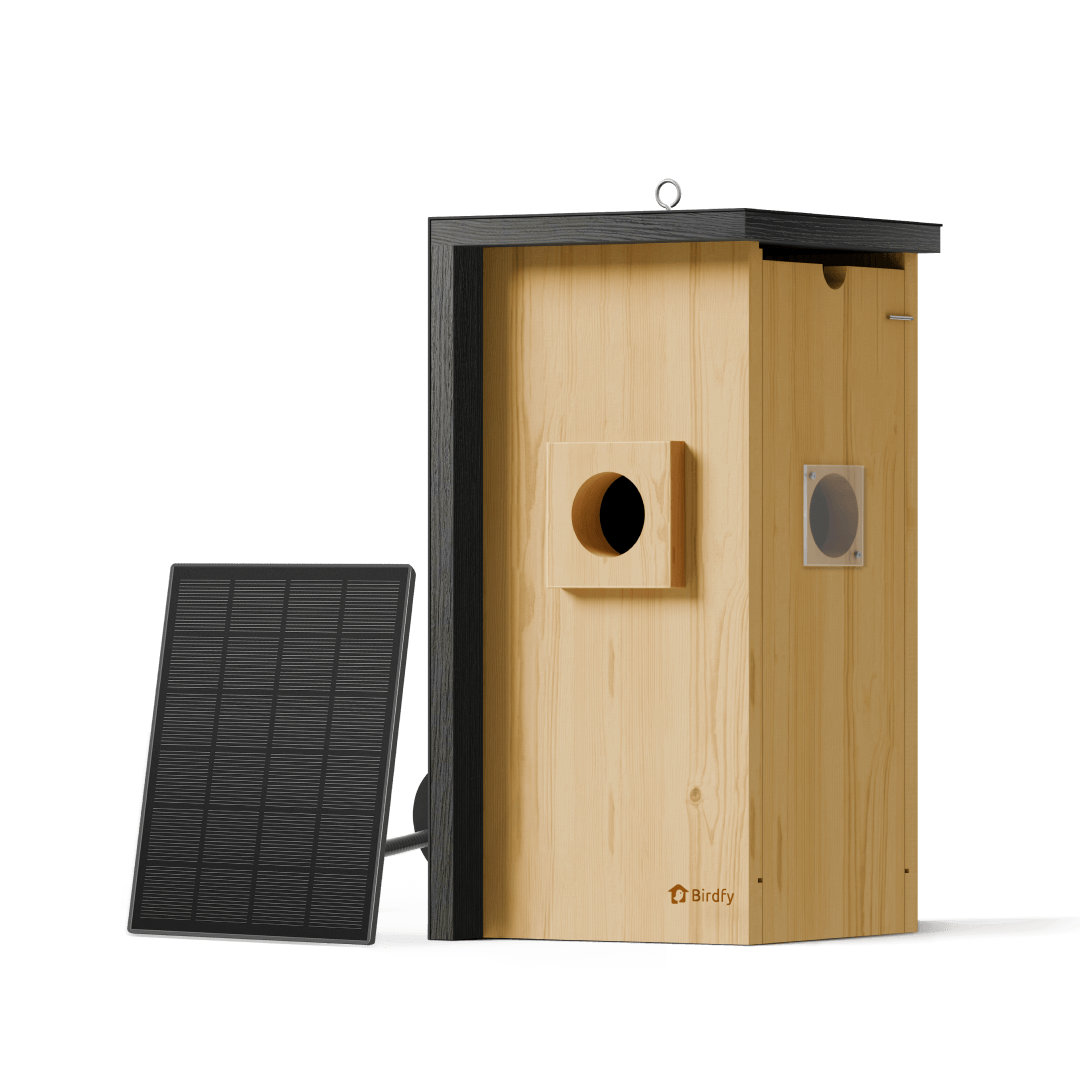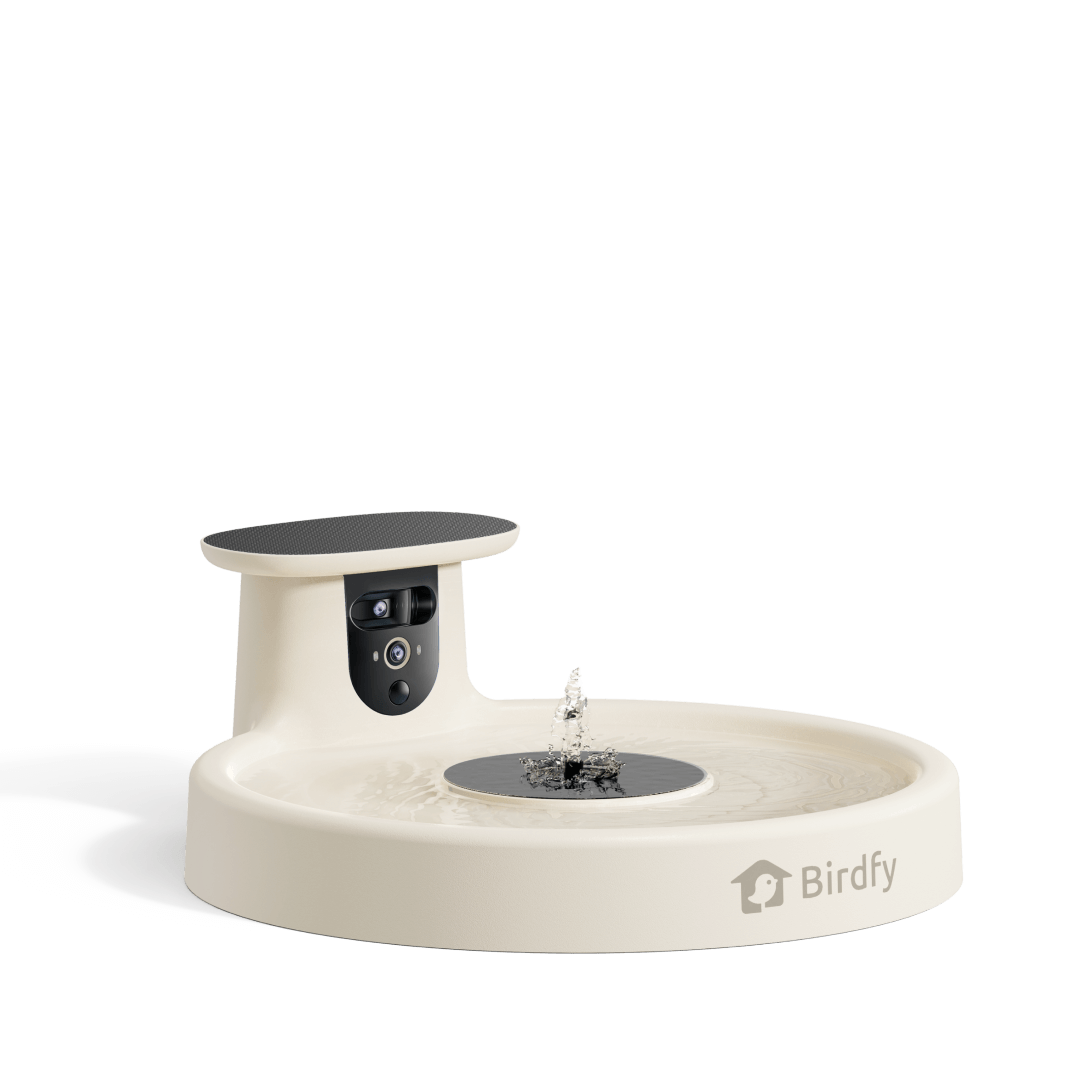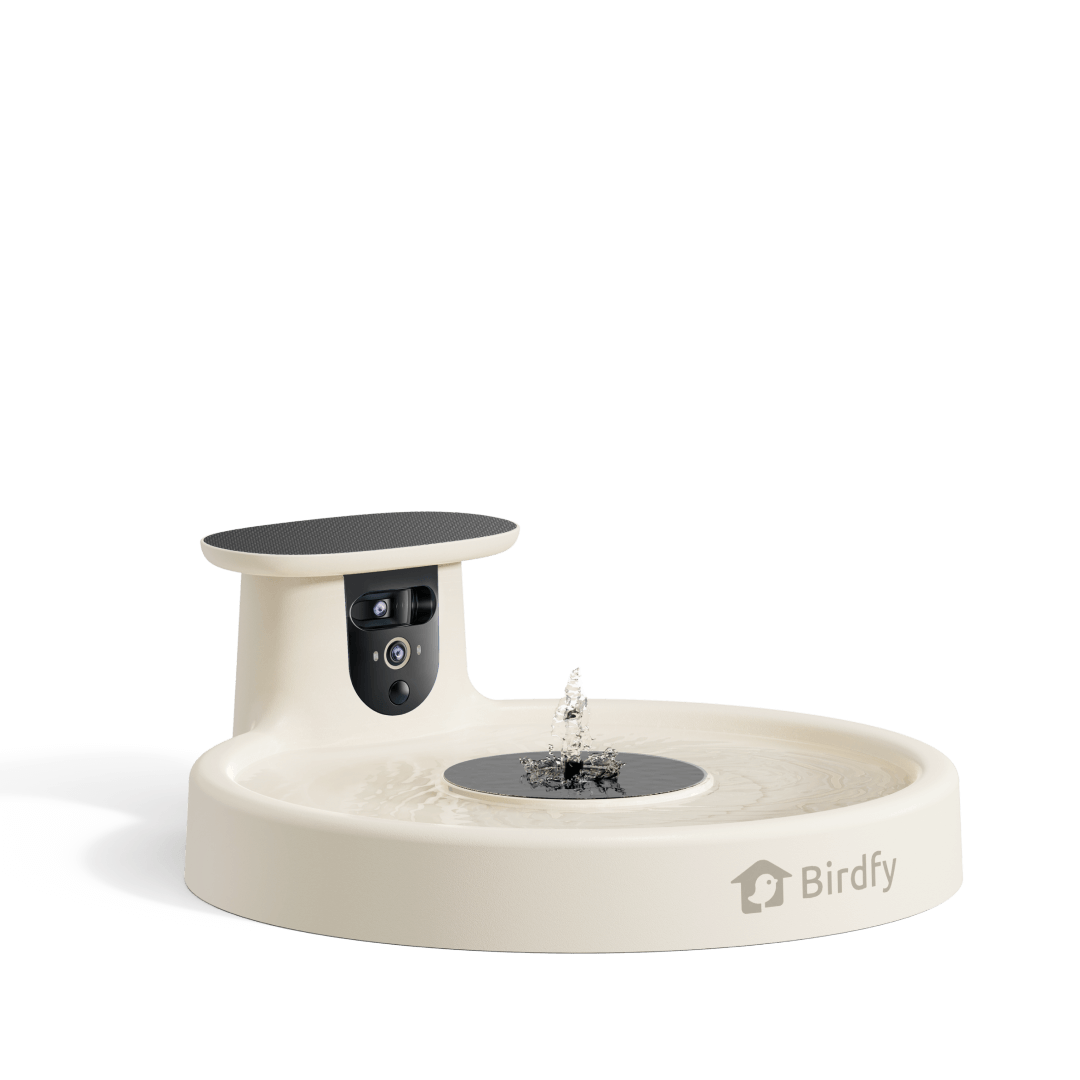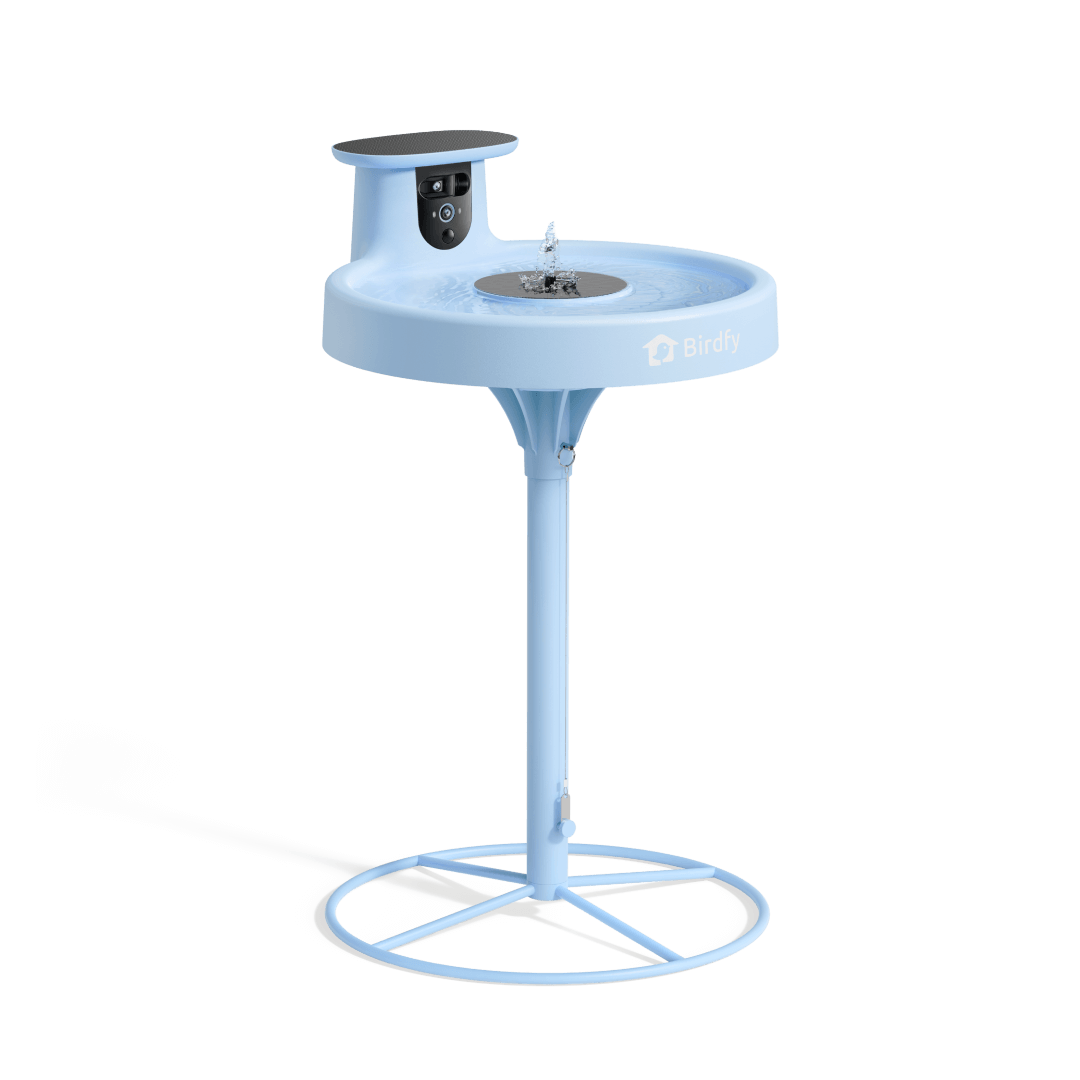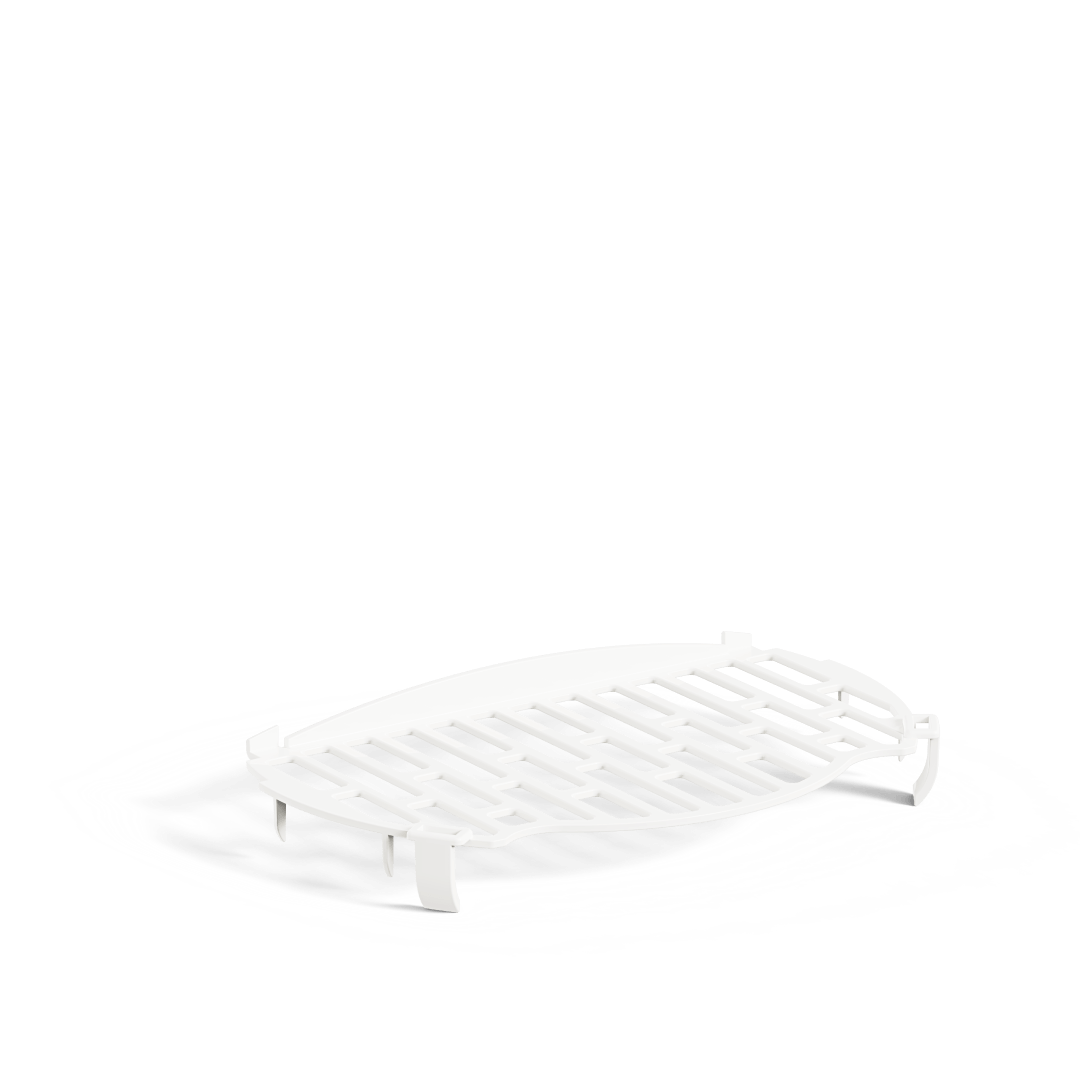13 Fun Facts About Red-Tailed Hawk
Introduction
Due to the Red-tailed Hawk's broad distribution and overall visibility in people’s lives, this bird is one of North America's most identifiable bird species. These raptors from Canada to Central America are common in wilderness, broken residential areas, and near freeways. Therefore, the Red-tailed Hawks boast broad wings, sharp claws, and red tails, and as famously used in most films and TV series, the shrill call. This was about the distribution of the Red-tailed Hawk and its common presence in everyday life.

Many people might not have encountered one in real life, but everyone knows the cry of this bird, which represents the untamed wilderness in movies and TV series. Red-tailed Hawks are also found in North and Central America, with their geographical distribution stretching from the Canadian forest to the Panamanian forest. These hawks can be found in almost any habitat, from the forest to the grasslands, deserts, mountains, and even cities.
Many people outside North and Central America may have seen the Red-tailed Hawk in nature programs and movies. Due to the uniqueness of their calls, they stand out and are found in nature parks, zoos, and birding tours worldwide.
This article presents the 13 fun facts about red-tailed hawks. We will also look at the Red-tailed Hawk's habitat in North and Central America and how people might have heard of or seen this bird, even outside these regions. So read further!
Habitat And Living Environment
Red-tailed Hawks are good at adapting to their environment and can be found in many environments. Depending on their kind, they can invade the open deserts, forests, mountains, and densely populated areas. They do not, however, migrate to places such as the tundra, where it is hard to find anything living, or heavily wooded areas, where hunting is complicated. Their success lies in their versatility in locating food and nesting grounds in almost any habitat.
Common Perching Habits
One of the most displayed behaviors is perching on trees, fence posts, telephone poles, and many other tall structures. Sitting on the ground at a certain height, they can monitor and look for any movement. From a higher ground, these birds can see targets such as rabbits, mice, and other small mammals.
In rural areas, fences by the roadsides are favorite hunting grounds, and hawks sit at the tops of these fences, waiting for their prey. In cities, telephone poles and building ledges replace trees and provide the same hunting ground. This is why food is not a big issue to these hawks, irrespective of their locality.
Aerial Soaring
Red-tailed Hawks are fantastic at aerial soaring and mighty birds. Unlike most birds that have to beat their wings constantly, they soar on columns of rising warm air called thermals. It assists them in saving energy when flying over large distances or hovering over areas with prey below. As they have flight behavior while searching for food, they extend their large wings and expand their tails when flying, making a level dispersed flight.
Diet And Hunting Habits
Red-tailed Hawks are carnivorous, so they strictly feed on animal flesh. It is a predatory species that uses good vision, sharp claws, and heavy bills to hunt and kill its prey. Most are active during the day, relying on eyesight to spot any movement, even from great heights. Some fly around the areas where they expect to find their prey, while others sit on trees and wait for the right time to attack.

Primary Prey
The primary diet of these hawks consists of Small mammals (such as voles, prairie dogs, and rabbits), snakes, other birds, and carrion. Small mammals make up the primary diet of the Red-tailed Hawks. However, they also hunt snakes and other birds and sometimes feed on carcasses (dead animals). This is because they are versatile in terms of diet and, therefore, can exist in various habitats where some species of prey may be plentiful or rare.
The Story Of The Red-Tailed Hawk And The House Cat
Another inspiring incident is associated with the predatory flight of a Red-tailed Hawk who tries to catch a house cat in a suburban zone. Given this, the hawk could see the cat, but the cat was not helpless and struggled free. This event brought out the hawk's ability to change its hunting type more so the animals found in human areas. It also reveals how these birds are opportunists. Although most of them feed on insects, they quickly catch other bigger and complicated animals wherever they are.
Red-Tailed Hawk’s Habitat
Now, let’s have a detailed analysis of the red-tailed hawk habitat:
Survival Environment
They are found in nearly any environment except tundra and dense forests. The only regions they do not inhabit are tundra and dense forests. This is because they require large areas of ground to roam about in search of food. Such versatility of the surroundings is evidence of flexibility, and as a result, falcons are considered one of the most successful birds of prey in the Americas region.
Adaptability
Its adaptability allows it to thrive in various habitats. This primarily means that the Red-tailed Hawk has no restrictions wherever it may want to settle and breed. It includes remote areas in the wilderness and urban population centers. That is why these birds change their ways of hunting and nesting in their territories. They can be seen near roads, city parks, and rural farmlands.
Physical Characteristics
These are large-bodied, large-beaked birds that are very muscular and strong. They have different features from other birds. The most easily recognizable aspect of these birds is their bright red coloration on the tail, which becomes apparent when flying. They must have large wings, sharp, hooked beaks, and strong claws to facilitate efficient hunting.
Wing Leading Edges
One of the characteristics of Red-tailed Hawks is that they have dark markings on the leading edge of their wings. These markings appear when they spread their wings while flying and are easily discernible from a distance. Birdwatchers can use this to differentiate them from other hawks due to this characteristic.
Tail
One of the most noticeable parts of a Red-tailed Hawk is the tail. The adult hawks have bright red tails; therefore, when flying high in the sky, one cannot fail to see the bird. This red tail is a sign of stunning color and makes the bird easily recognizable by bird lovers or bird watchers from other hawks. The tail is bright red, with a 3.4 to 4.8 feet wingspan. Their feather colors range from dark reddish-brown to cream-white.
Juvenile Tail Markings
Juvenile hawks have striped tails and take about two years to develop the adult red tail. However, their tails are barred with black and white or pale colors. These stripes enable young hawks to hide well and avoid getting preyed on by other wild animals.
Other Features
It is also important to note that Red-tailed Hawks have some other features; for instance, all the birds of this kind possess red tails. Their legs and feet are slender and painted bright yellow, so they can easily be spotted when sitting. These strong legs are clawed to take and hold the prey. They have large beaks curved and hooked to tear meat from its prey. These structures of beaks enable them to be perfect hunters who can puncture through skin and kernels. Another distinct characteristic is bare yellow legs and feet, curved hooked beaks, and white U or V-shaped spots on the feathers.
Comparison
Let’s look at the differences between the Red-tailed Hawk and other raptors, particularly in beak structure. Red-tailed Hawks don’t resemble the majority of other raptors in that they have distinct facial features, specifically the beak. Their beaks are stronger and more developed than those of falcons, while the latter have sharper and more delicate beaks. It enables Red-tailed Hawks to plunge into larger meals, unlike falcons that kill by smooth, sharp beak incisions. Second, Red-tailed Hawks are heavier, and their wings are more expansive, giving them more ability to glide over long distances.
Flight Behavior
These birds are great flyers with unique flight styles that use less energy, especially while flying. It has long, narrow wings and mostly moves stylishly and slowly like a helicopter without flapping wings. They conserve energy by gliding, with a typical flight speed of 20 to 40 miles per hour, and can dive at speeds of up to 120 miles per hour.

Opportunistic Predator
Red-tailed Hawks prey on any available prey and sometimes injure themselves by failing to slow down during a dive. Like their raptor relatives, these are about catching big animals, but they feed with whatever they get most of the time. They do not bother whether it is a mouse, a snake, or a bird. They can bend tactics depending on the occasion. These are comer flexible diets that make them fit into different places.
Food And Hunting Behavior
Red-tailed Hawks are accomplished carnivores, employing their extraordinary eyesight, ferocious claws, and razor-sharp beaks in hunting for their food. Generally, it will fly over the countryside or perch somewhere high and look for activity on the ground. After identifying their prey, they move in with great agility and precision.
Prey Species
They consume about 200 types of prey: tiny mammals like mice, rabbits, and ground squirrels. Their primary diet consists of small mammals such as mice, rabbits, and ground squirrels, but they can also hunt reptiles, birds, and even insects. It allows them to survive in various ecosystems where some of their prey might be more plentiful than others.
Crow Disturbances
Despite various well-known bird species, crows are said to Crows sometimes harass Red-tailed Hawks to protect their nests or disrupt hawk nesting activities. It is also a violent behavior where different crows attack a hawk by flying around it and making calls. They do this to defend the nest and their young from hawks that may come and feast on crow’s chicks.
Red-Tailed Hawk Calls
The Hawk’s Call
Many people have heard its distinctive call, even without seeing the bird. One of the more distinguishing features of the Red-tailed Hawk is its call. It is a very vocalizing and distinct sound of ‘kee-the-arr.’ Even though the hawk may be unfamiliar, one may recognize this call as belonging to this bird variety, either witnessed in nature or heard in movies. Its unique call is used with the freedom of the Great Plains and contributes to the bird’s persona as the hawk.
Common Use In Films
Filmmakers often use the Red-tailed Hawk's call as a substitute for other raptors' sounds. Notably, the scream of the Red-tailed Hawk is frequently imitated in movie scenes and TV programs, even if the enacted bird is not a hawk. Its cutting, dramatic scream has caused filmmakers to replace the sounds of other birds, such as eagles, to symbolize the Wild West and danger.
Size And Gender Differences
This species has quite distinguishable size and sexual dimorphism differentiation among the members of the breeding population. This is a typical aspect of many species of the avian order, where women in this business layer prevail and are more significant than their male counterparts. They can do that due to the size differences and perform different hunting and nesting tasks, making them better off as a species.
Sexual Dimorphism
Sexual dimorphism is associated with the variations in male and female animals of similar species. In Red-tailed Hawks, this difference is most easily seen in size and weight. Females are 25% larger than males. They have short, dark-colored beaks with the characteristic hooked structure of birds of prey; however, they are no less effective than those of males. This is because larger size enhances the ability of the females to defend the nest against predators. In comparison, the lighter size of the male makes them more efficient in catching prey.
Sexual Maturity And Lifespan
Red-tailed Hawks typically reach sexual maturity by three years old. At this stage, they have the physical ability to locate mates for reproduction purposes. In the wild, their average lifespan is 10 to 15 years, but some individuals live up to 30 years. Some have been documented to live up to thirty years more despite rarely coming into contact with predators, extreme weather conditions, or human beings.
Courtship And Reproduction
Now let’s have a look at the Courtship and Reproduction:
Courtship Displays
Courtship in the Red-tailed Hawk includes some mysterious flight in the air. The Male hawks perform aerial maneuvers, including steep dives and locking talons in mid-flight. Another admirable occurrence is when two hawks eventually catch and lock their claws while flying and drop themselves until they disunite.

Nesting Habits
Another feature of the nesting habitat of Red-tailed Hawks is that they typically nest in trees, often reusing previous nests. They create their nests at very high altitudes to avoid predators' easy access to their eggs. Notably, eagles are expected to rebuild a nest from scratch yearly, but they are known to patch up old nests instead. This behavior assists in preserving energy and ensures that they will have an appropriate place to raise young ones.
Division Of Labor
Incubation is performed primarily by females in Red-tailed Hawk pairs, indicating that only one couple incubates the eggs. Females incubate the eggs, usually 1 to 4, with a 28 to 35-day incubation period. The chicks fledge after about 45 days. During this period, the male hawk is expected to go out hunting for the female so that she may remain glued to incubating the eggs.
Parental Care And Protection
Red-tailed hawks share incubation responsibilities and food provisioning, demonstrating remarkable parental care. Until the chicks can fly and hunt, both parents watch over the nest, ensuring they are secure and fed.
Aggressive Protection
Red-tailed Hawks show intense protection of their chicks from potential threats. It is mainly the male parent who fiercely defends the nest against predators like snakes, raccoons, and other birds of prey. They attack intruders, and with their sharp claws, they force anyone who trespasses out of their territory in the most dangerous way possible.
Learning To Fly And Hunt
Chicks of this Red-tailed Hawk take several weeks after hatching to fly and hunt, even though they are called fledglings. They become independent at about 45 days of age but hang around the nest for some time. During this period, their parents feed them and teach them more hunting knowledge so they can survive independently. The chicks stay near the nest for an extended period, with occasional food provision from the parents.
Red-Tailed Hawk's Habitat Distribution
Let's have a look at the Red-tailed Hawk's Habitat Distribution:
Habitat Range
Red-tailed Hawks are widespread and native to North and Central America. Some areas may cover regions they inhabit for the year, and purple areas on maps indicate their resident range. Their breeding area is also located farther toward the north during the summer season, in an orange shade. They prefer woodland areas near fields but have adapted to urban habitats, such as fence posts and telephone poles.
Adaptability
They have been able to adapt well to the environment in the cities. Red-tailed Hawks can live in city parks and suburban areas. These characteristics have ensured they can share human habitat and survive many harsh environmental conditions.
Comparison With Other Raptors
Comparison highlights how the Red-tailed Hawk’s size, flight behavior, and physical characteristics distinguish it from other raptors. Let’s read further:
Misidentification With The Red-Shouldered Hawk
Many People often confuse red-tailed Hawks with red-shouldered Hawks. The primary reason is that they have a long black tail with white spots, lighter underparts, and light streaking on the belly compared to the Red-tailed Hawks.
Threats And Environmental Issues
Several factors threaten the existence and general welfare of red-tailed hawks, primarily due to man’s interference and alteration of the environment. Despite their adaptability, these issues pose significant risks:
Rodenticides are a significant cause of Red-tailed hawks deaths. After ingesting poison through their prey, these hawks suffer health problems. Predators feeding on poisoned prey become affected for various reasons, making them fall sick or die. This issue appeals to finding safer ways of eliminating these pests so that wildlife is not exposed to poisonous products.
Red-Tailed Hawk Calls And Film Depictions
By using the Red-tailed Hawks call, filmmakers effectively enhance the emotional impact of their scenes, further cementing the hawk’s legacy as a symbol of the wild in both nature and media.
Call Characteristics
The Red-tailed Hawk vocalization is a loud, shrill whistle noted as “kee-eeeee-arr.” This threatening mood is utilized in films when it is necessary to depict the depicted bird, even though it may be, for example, a Red-tailed Hawk. The sharp call of the adult Red-tailed Hawk is often used in films to represent other raptors due to its chilling tone.
Use In Media
The familiar use of the hawk's call in movies helps create a strong association between the sound and raptors. Probably one of the most familiar birds of prey sounds in today’s popular media is the Red-tailed Hawk. Filmmakers typically use it to create or add an appearance of drama in a shot taken in or featuring the environment, forest, or any natural setting. It has made the hawk's sound one of the most famous bird sounds in the world, thereby entrenching it not only in wildlife but also in culture.
Conclusion
Red-tailed hawks are incredible creations of God from birds of prey characterized by flexibility, power, and looks. These hawks are widespread in Northern and Central America, and their habitats include forests, grasslands, and even cities. Always associated with the red color of their tails, remarkable eyesight, and strong claws, owls are considered great predators that can hunt all sorts of prey, such as small mammals, reptiles, and birds.





